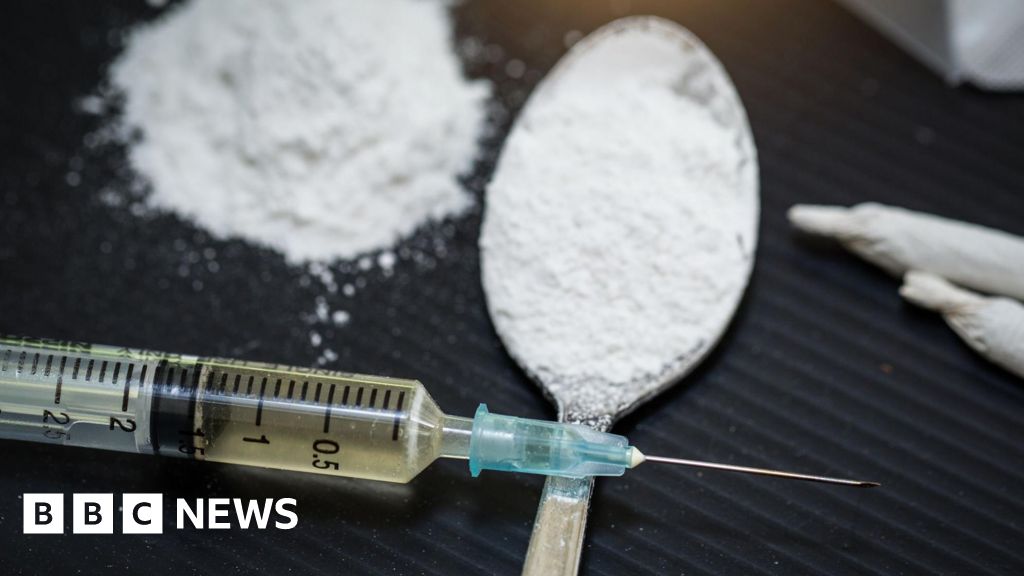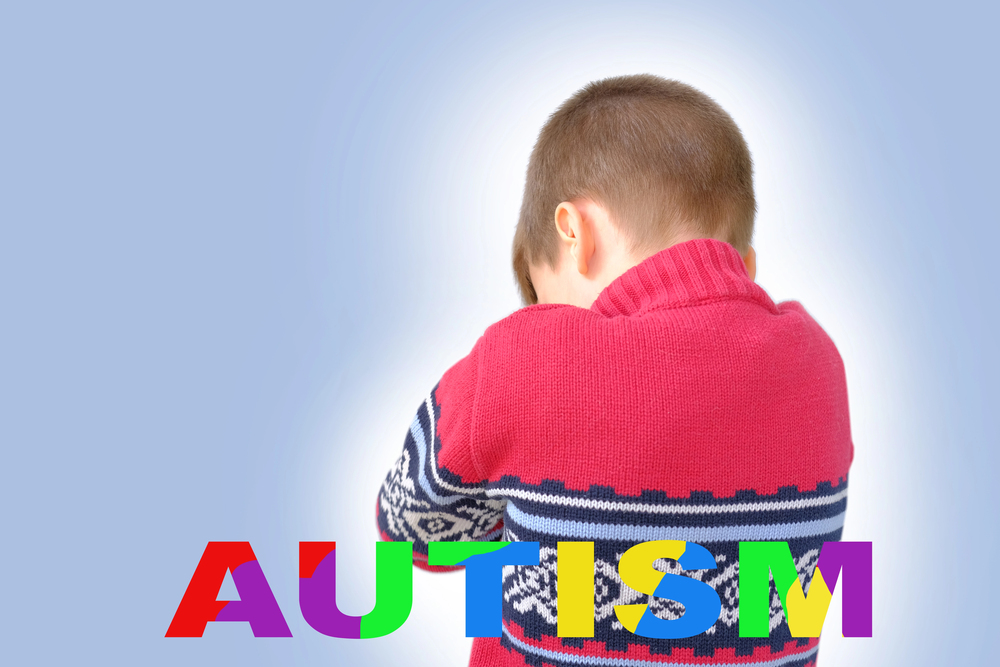ADHD prescriptions have more than tripled in a decade - and I know exactly why: By top child psychotherapist DR SAMI TIMIMI By DR SAMI TAMIMI Published: 11:48, 8 April 2025 | Updated: 11:52, 8 April 2025 e-mail View comments I was driving through the countryside in Ireland with my wife recently when I heard a shocking statistic on the radio: one in 50 children now has an autism diagnosis. Eighty years ago, it was one in 2,500. From 2000 to 2018, attention deficit hyperactivity disorder ( ADHD ) diagnoses doubled for boys and trebled for girls.
Last year, 248,000 people in England received ADHD prescriptions - a more than threefold rise from 81,000 in 2015. It baffles me how we got here. Or rather it doesn’t – not really.

I have been a child and adolescent psychiatrist and psychotherapist for 28 years, and when I started in psychiatry in 1989 no one was diagnosing ADHD. Now there is an entire industry built around it. A huge market for private diagnosis, in which people, including parents – encouraged by mental health ‘influencers’ on the internet – find themselves paying thousands of pounds to find out what’s ‘wrong’ in them or their child when very often nothing is.
That industry is now in the grip of a market designed for profiteering. I get emails every week from private psychiatry companies inviting me to work for them as they have lots of people waiting for an assessment for ADHD or autism. And yet, even as the queues for private diagnosis get longer, the symptoms people come with get broader.
The truth is you don’t even have to have any or all of the behaviours commonly associated with what textbooks refer to as ADHD and autism any more. The condition has become, in some ways, whatever you want it to be – a nebulous set of behaviours and experiences many may identify with. It means almost everyone who pays their £1,000 plus for a private assessment will get a diagnosis, which they have been primed to expect and will feel disappointed not to receive.
And as more people are diagnosed with it, so the ADHD market proliferates, offering not just assessments and medications, but different types of therapy, self-help books, podcast subscriptions, expert coaching, you name it – all with a price tag. There is a huge market for private diagnosis, in which people, including parents, find themselves paying thousands of pounds to find out what’s ‘wrong’ in them or their child I don’t blame parents for wanting these diagnoses and interventions for their children. After all what good parent wouldn’t want to find out if their child has a condition they could potentially ease? But I see this as a form of exploitation.
Parental anxiety about behaviour that might be a childhood phase or part of the gloriously diverse ways each child develops, is being monetised. Labels that may well disempower and even disable a child later in life are being sold to parents as the ‘answer’ to their fears. Back at the start of my career, ADHD did not exist.
There was something called Hyperkinetic disorder – a kind of hyperactivity – but this was so rare, I didn’t see a single case for the first few years of practice. In the mid to late 1990s, colleagues began talking about ADHD, which was a concept imported from the US, but it was thought of then as a developmental condition affecting children, mainly boys, who were expected to grow out of it. It was around this time - long before the days of easily-searchable online databases - that I examined a whole bundle of literature in the library for research I was working on about whether boys being expelled from local schools for behavioural problems might have this new condition.
In those papers the authors were already assuming that ADHD was ‘a thing’ – and yet for me it was like a will-o’-wisp. Whenever I tried to grab hold of an actual definition of this new ‘disorder’, it disappeared. I’d finish each paper and think: ‘But what are you talking about? How do I identify this medically?’ By the mid-2000s, the idea of adult ADHD began to emerge and it was no longer considered something that children grew out of, but instead a potentially life-long condition, often needing medication.
And now - over the last five years - this evolving monster has been broadened by the concept of ‘masking’, meaning that people can suffer from ADHD without actually displaying any of the symptoms. As a result, more women are being diagnosed, because they are assumed to be better at masking. When Dr Sami Timimi says that when he started working in psychiatry in 1989, no one was diagnosing ADHD Yet nothing has changed since my initial unsettling confusion.
There have been no new scientific discoveries about what ADHD actually is – no studies that have consistently found anything significantly different about the brains or genes of those who get the diagnosis. The truth is you don’t even have to have any or all of the behaviours commonly associated with what textbooks refer to as ADHD and autism any more. We’ve seen a very similar pattern with the evolution of the concept of autism.
It used to be a very rare condition, diagnosed in only 0.04 per cent of people in studies in the 1960s, mostly in children who had high rates of epilepsy, chromosomal disorders or moderate to severe learning difficulties. And now we have that statistic that brought me up so short on my holiday: one in 50 children (2 per cent) today have a diagnosis of autistic spectrum disorder.
So why are so many people now claiming they have these conditions? For me, the emergence of these new neurodivergent disorders is the perfect example of how something grows, not because of any new scientific discoveries, but via a change of culture that brings new economic opportunities and in response to a deepening sense that society is broken. I believe this market for autism and ADHD diagnoses preys on the growing sense of alienation and insecurity many people have. It is a commodification of these disorders, and once people are making money, they are bound to defend what they’re doing.
The consequences of adopting this non-scientific, simplistic framework for ADHD diagnosis have been catastrophic for our collective mental health and for our understanding of distress. I despair at the reaction of our mental health institutions. Like a stuck record, they argue for more resources and earlier diagnoses without questioning how our theory and practice may be adding to the growing mental health burden we are experiencing as a nation.
I am in the minority of psychiatrists who believe the fundamentals of our mental health systems are wrong - but I’m certainly not the only one. I co-chair a group called the Critical Psychiatry Network, which has around 500 doctors from across the world who share similar concerns about the direction we’re going in. One of the things that I feel passionate about is that we need to bring emotional reactions, however intense they are, back into the realm of the ordinary or understandable.
Read More I was stunned when my ADHD vanished - along with the flab - the moment I started weight-loss jabs We should be able to talk about how we feel without jumping into panic mode and imagining that what we’re describing could be the onset of some mental disorder. I try to help the young people I see understand that being able to tolerate, live through and find meaning in low mood or anxiety, for example, is a sign of resilience, not a disorder. Modern day living no doubt contributes to our so-called crisis in mental health.
Childhood has been changing over time. These days children are more heavily scrutinised by adults, whose anxiety may well rub off on to the children themselves. Social media has eroded the boundary between home and school and encouraged shorter attention spans.
The rise of the online neurodivergent ‘influencers’ has turbocharged this trend. An analysis of the 100 most popular ADHD videos on TikTok, reported recently, found that claims of messy bedrooms, forgotten keys and procrastination at work are presented, wrongly, as ‘symptoms’ of the condition. These videos have amassed nearly half a billion views, causing young people to self-diagnose and setting them potentially on a pathway to a new identity and even medication.
In the short term, medication may appear to make a difference - but medication for ADHD is amphetamine-based. It increases the heart rate and the metabolic rate and can make you more susceptible to cardiovascular events. These substances are potentially addictive, too, meaning you become tolerant to their effect.
Over time the doses increase and so do the side-effects, such as not being able to sleep. Patients end up being prescribed melatonin for their insomnia but as they become more tolerant, and their behavioural problems re-emerge, they may get heavier sedatives - and eventually some end up on multiple medications. It is a vicious cycle underpinned by the crippling idea there is something wrong with their brains.
What’s more, the effects of these drugs don’t target the disorder itself. They affect everyone the same way by giving you a tunnel vision – which is the reason people take them at raves so they can get deeply into the music. When children take them, they appear calmer because, instead of being bored quickly, their attention is more likely to be absorbed by the task they’re doing.
Long term, however, studies show that ADHD medication makes no difference in outcomes. In fact, some studies show that the outcomes are actually worse in terms of so-called ‘symptoms’, mood and relationships. (See my book for the sources as they are multiple.
) I’m all too aware that there will be thousands of parents reading this who may have been told by teachers that their child may have ADHD or is on the autistic spectrum, and then put them on a pathway to diagnosis. I can understand why a parent may wish that, given that we have publicised the existence of such conditions and encouraged early diagnosis. My advice? Don’t agree to a referral.
Fight it every step of the way. Love your kids, be patient, and you will find a way through. As told to Jill Foster Dr Sami Timimi is the author of Searching for Normal: A New Approach to Understanding Mental Health, Distress and Neurodiversity, published by Vintage (£25).
Share or comment on this article: ADHD prescriptions have more than tripled in a decade - and I know exactly why: By top child psychotherapist DR SAMI TIMIMI e-mail Add comment Comments 0 Share what you think No comments have so far been submitted. Why not be the first to send us your thoughts, or debate this issue live on our message boards. Add your comment Enter your comment By posting your comment you agree to our house rules .
Submit Comment Clear Close Do you want to automatically post your MailOnline comments to your Facebook Timeline? Your comment will be posted to MailOnline as usual. No Yes Close Do you want to automatically post your MailOnline comments to your Facebook Timeline? Your comment will be posted to MailOnline as usual We will automatically post your comment and a link to the news story to your Facebook timeline at the same time it is posted on MailOnline. To do this we will link your MailOnline account with your Facebook account.
We’ll ask you to confirm this for your first post to Facebook. You can choose on each post whether you would like it to be posted to Facebook. Your details from Facebook will be used to provide you with tailored content, marketing and ads in line with our Privacy Policy .
.
Health

ADHD prescriptions have more than tripled in a decade - and I know exactly why: By top child psychotherapist DR SAMI TIMIMI

Last year, 248,000 people in England received ADHD prescriptions - a more than threefold rise since 2015. It baffles me how we got here. Or rather it doesn't. Now there's an entire industry built around it.














